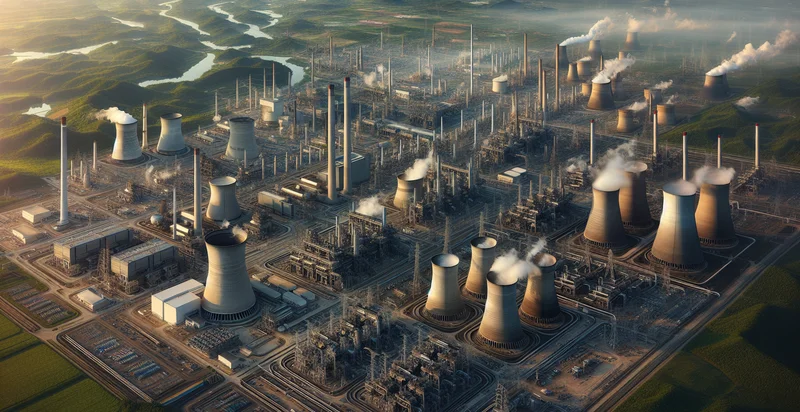Identify aerial views of power plants
using AI
Below is a free classifier to identify aerial views of power plants. Just upload your image, and our AI will predict if the aerial view shows a power plant - in just seconds.

Contact us for API access
Or, use Nyckel to build highly-accurate custom classifiers in just minutes. No PhD required.
Get started
import nyckel
credentials = nyckel.Credentials("YOUR_CLIENT_ID", "YOUR_CLIENT_SECRET")
nyckel.invoke("aerial-views-of-power-plants", "your_image_url", credentials)
fetch('https://www.nyckel.com/v1/functions/aerial-views-of-power-plants/invoke', {
method: 'POST',
headers: {
'Authorization': 'Bearer ' + 'YOUR_BEARER_TOKEN',
'Content-Type': 'application/json',
},
body: JSON.stringify(
{"data": "your_image_url"}
)
})
.then(response => response.json())
.then(data => console.log(data));
curl -X POST \
-H "Content-Type: application/json" \
-H "Authorization: Bearer YOUR_BEARER_TOKEN" \
-d '{"data": "your_image_url"}' \
https://www.nyckel.com/v1/functions/aerial-views-of-power-plants/invoke
How this classifier works
To start, upload your image. Our AI tool will then predict if the aerial view shows a power plant.
This pretrained image model uses a Nyckel-created dataset and has 2 labels, including Active Power Plants and Inactive Power Plants.
We'll also show a confidence score (the higher the number, the more confident the AI model is around if the aerial view shows a power plant).
Whether you're just curious or building aerial views of power plants detection into your application, we hope our classifier proves helpful.
Related Classifiers
Need to identify aerial views of power plants at scale?
Get API or Zapier access to this classifier for free. It's perfect for:
- Infrastructure Monitoring: Aerial image classification can be utilized to monitor the structural integrity of power plants' infrastructure over time. By identifying any significant changes or damages in the classification images, maintenance teams can prioritize inspections and repairs, ensuring operational efficiency and safety.
- Environmental Impact Assessment: This classification function can help environmental agencies assess the impact of power plants on surrounding ecosystems. By analyzing aerial views, organizations can monitor vegetation health, water bodies, and land usage, facilitating informed decisions regarding environmental conservation.
- Site Selection for New Power Plants: Using aerial imagery to classify potential sites for new power plants enables more informed decisions on location selection. By evaluating land usage, proximity to resources, and community impact, energy companies can minimize risks and optimize their investments.
- Regulatory Compliance Monitoring: Aerial views of power plants can help ensure compliance with environmental regulations and permit conditions. By accurately classifying and reporting the physical state of facilities, regulatory bodies can hold operators accountable and promote sustainable practices.
- Disaster Response Planning: The image classification function can aid in preparing for and responding to natural disasters affecting power plants. By identifying vulnerable areas through aerial assessments, disaster response teams can create more effective emergency plans and allocate resources strategically.
- Performance Optimization: This technology can be applied to assess operational performance by analyzing aerial views for potential inefficiencies. By identifying issues like waste heat or unutilized areas, operators can implement strategies to enhance the overall energy output of the plant.
- Investor Relations and Reporting: Aerial imagery classification can be leveraged to provide investors and stakeholders with visual updates on power plant conditions and improvements. This transparency can strengthen relationships and provide assurance regarding the plant’s operational health and future viability.


